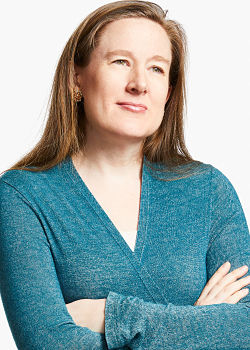When arts criticism fades or declines, as it definitely seems to be doing now in the U.S., it’s not just bad for the critics who lose their jobs and their readers. It is also manifestly bad for the arts they cover, as critics aren’t just the folks who still most often introduce artists, particularly new artists, and their work to the wider public. At their best critics are also champions of, and models of intelligent engagement with, the art form they cover.
Of course, many artists don’t see critics quite so rosily, as they are also often gatekeepers, scolds, and scourges—unelected judges whose seemingly capricious verdicts can shape or constrain careers. This natural antipathy has been aggravated in recent years by two arguable but powerful perceptions: that the disproportionate power of a few major critics has only been amplified by the shrinking readership for everyone else; and that the field of theatre, in particular, has diversified its personnel far more rapidly than have the publications who cover it. This has left too much critical power, goes a familiar critique, in the hands of mostly white men for too long, though it’s worth pointing out that that picture has lately been changing, with more female critics and critics of color finding berths at publications of all sizes. Whether or not you attribute the material fortunes of artists directly to their critical reception (I can summon proof on both sides of this case, if anyone’s asking), and whether or not you accept the premise that critics and the artists they cover should resemble each other more than they currently do, it’s not hard to observe an increasingly toxic divide between theatre artists and critics that goes beyond the usual professional hostility or social media crossfire, and seems bad for both theatre and criticism.
Can a new online publication called 3Views on Theater change all that? A long-gestating project of the Lillys, a nearly-decade-old advocacy organization for women in theatre best known for their annual awards, 3Views recently launched a Kickstarter to help fund their effort, which on paper sounds like a higher-stakes version of HowlRound, plus a dash of the indispensable feminist theatre site The Interval and the artist-focused site Stage & Candor. Touting the involvement of well-known writers including Alison Bechdel, Alexander Chee, Eve Ensler, Roxane Gay, Jessica Hagedorn, Claudia Rankine, Zadie Smith, Wally Shawn, and Gloria Steinem, 3Views plans to begin publishing this fall; the $50,000 they’re raising now will go toward a total launch budget of $150,000. The plan is to have monthly rotating chief editors, who will help curate the content—slated to comprise around 15 pieces a month—with the help of ongoing editors Michelle Tse (one of Stage & Candor’s editors) and Penny Pun, a playwright.
What kind of content, and for whom? I spoke recently with Tse and Pun, who were joined by two of 3Views’s founders, playwrights Sarah Ruhl and Julia Jordan, about the new magazine’s ambitions and focus.
ROB WEINERT-KENDT: I’ll start by saying I’m in favor by any effort to bring more voices into the discourse. In fact, a number of the writers on your list are ones we have on our wish list too. But the language of your pitch makes it seem like this is not just about adding voices; it’s also an attempt to address a problem or a lack in the current state of criticism. Could you state your theory of the case—what you think is wrong that 3Views can help address?

SARAH RUHL: We always love to keep it positive and to frame it in terms of being additive and complementary. But I think one problem is dwindling arts coverage all across the country. Another problem is that the diversity of voices onstage aren’t reflected in the diversity of the critics at many of the leading papers. We feel like multiplying and adding voices and making artists feel seen, and also acknowledging where critics are coming from, would be hugely illuminating. Also, finding voices from different genres—fiction writers, poets, cultural critics—to write about theatre would help connect theatre to the broader cultural conversation. I don’t think that’s addressing a problem, necessarily, but it feels important.
JULIA JORDAN: Another thing that is important to us: We’re gonna make a real effort to have someone respond to a play who is an actual member of the audience for which that play was written. We may not always hit it right on the head, but that is going to be an attempt.
How do you know who that intended audience is? Does a playwright tell you?
JORDAN: Well, that’s why I put it as: We’ll try.
But wouldn’t some playwrights say, “Well, I want a wide audience, I’m not writing just for people like me”?
RUHL: Yeah, and I think that’s part of the multiplicity, knowing that it’s very hard to thread that needle. So why don’t we get three views? Why don’t we get three different people, so that a meaning gets made that’s a little bit wider? Because that’s the trick of being a playwright; you’re trying to write something for 300 people to experience at one time. So how can one body, one subjectivity, take it all in? Penny keeps using the word “fractal.” What’s a kind of fractal experience of theatre?
So tell me about these “three views.” Does that mean there will literally be three pieces on each play?

JORDAN: Yes, we’ve talked about having, for one play three reviews from three kinds of reviewers, people from different places. But we also are going to have this section called “purview,” in which people can respond to a review or submit their own review or review something that we haven’t covered. They’ll be articles; they won’t just be a comment section.
One part of your pitch says, “Our notion of a review will model illumination over opinion.” I’m not sure what that means, exactly. Will the reviews have opinions in them? And are you prepared for the editorial oversight involved in publishing opinions you don’t personally agree with, or that others won’t?
MICHELLE TSE: As Sarah said earlier, we want to focus on a more positive note. But there will be, I think, opposing views. And that’s what Penny and I are here for, sort of in the background, ready to deal with it.

PENNY PUN: Actually, what we can term “disagreement” I think will be very useful for the work we’re trying to do, because I think in embracing diversity, especially from different areas of identification, there must be conflict. But I think it’s in the conflict that we’ll see how we can actually embrace literal diversity, instead of tokenism or just reducing one’s identity to one perspective.
RUHL: This is one question that keeps coming up, about negative reviews. We want to have really tight editorial oversight over vitriol. The last thing I would ever want to do in this life is add more vitriol to the American theatre. It just doesn’t interest me at all. We’re thinking of it much more like New York Review of Books: people adding responses, reactions, trying to hone the meaning of a play, a response to a play, not a thumbs-up/thumbs-down kind of response that leads to endless, open-ended argument. So it’s more like a book club and less like Siskel and Ebert having an argument over a play.
JORDAN: We’re also going to let people know what will be reviewed coming up, so there’ll be a period of time in which they can go see it before the reviews come out and be part of the conversation.
Is it really fair to characterize the writing of most major theatre critics as thumbs-up/thumbs-down?
JORDAN: I’ve been thinking about that a lot in the past few days. It’s not like The New York Times has requested the power to open and close shows, but that is the behavior of the marketplace in many cases. And I think that just by having more voices out there that are actually being listened to, it might change the behavior of the marketplace. Right now, a fearful producer may be like, “The Times said no,” even if that wasn’t the intention of Jesse Green, you know what I mean?
Sure.
JORDAN: By adding more multiplicity and diversity, we will be changing the landscape.
RUHL: I would agree that the effect in the landscape is absolutely a thumbs-up, thumbs-down situation. There’s the website DidHeLikeIt, which just tells you whether Ben Brantley or Jesse Green liked something or didn’t like something. Obviously they didn’t invent that website, but somewhere there’s a perception, without irony, that there’s a man somewhere either liking or not liking something, and that’s all you need to know before you walk in and see a play.
JORDAN: And that’s all the producers need to know about whether or not they should continue to promote the show, or close it or transfer it.
Right. So we’re talking in a meta way about how the market responds to criticism, but I wanted to ask you, since you’re starting this online magazine publishing criticism, what are your own personal experiences with criticism?
JORDAN: One of my first plays got reviewed by John Lahr at The New Yorker, and it was definitely not a rave, but it was really important to me that it was him and he actually came to my show. It was really kind and it was very like, “This play doesn’t totally work for me, but keep going.” It was very much from a writer talking to another writer, and it was useful for me. And I think that’s something that’s really important to us: that critics and reviewers are artists in and of themselves. I think that’s a very valuable thing to bring to the discussion.
RUHL: I also think that my relationship to reading criticism has changed since I started teaching at the Yale School of Drama about seven or eight years ago. I read the reviews of my former students religiously. And what worries me is seeing first-time playwrights in New York having their play killed and then just leaving and going to L.A. and writing for TV, or just not writing again. And I think The New York Times book section actually has a rule that you can’t kill a first novel.
I hadn’t heard that. [UPDATE: New York Times book editor Pamela Paul calls this “certainly not true.”]
RUHL: So I’m very attentive to it, and worried particularly how the next generation of playwrights is coming up and how their work is either being nurtured or not nurtured in a critical way.
Getting down to nuts and bolts, how many plays are you going to be covering, and where?
JORDAN: We want to have a rotating sort of curating editor so that the point of view will change from month to month.
RUHL: We call it the 13P of criticism in that sense, in terms of the rotating editors.
JORDAN: So depending what that person is interested in, they’ll bring writers, and we’ll also have our stable from whom they can pick. I think the number we’ve settled on is five shows a month; every huge show in New York won’t necessarily get reviewed. Sometimes it’ll be something in a smaller theatre that the Times isn’t even covering, and we do have aspirations of covering theatre outside of New York as well.
So you’ll cover five plays a month from three angles: maybe a review of it, an interview about it, and then—I don’t quite understand the “purview” thing, but some other kind of piece about it?
RUHL: Yes, and let me just explain the “purview” a little, because I think we’re using the word differently than it’s normally used. The idea is that someone from the production can write about the work. So you could get a director, a playwright, a designer, an actor, an artistic director—someone who is like, “It’s my purview to tell you how I feel.”
I get it. And it’s not all going to come out at once, all three views of the same play.
PUN: I don’t think it will all come out in like one package every time. It’s just logistically not convenient, and also because if it is a website and we do have to keep new material coming every day or every half a day, so to have a giant package is just not good for a website.
The pitch you’re making really stresses the celebrity writers, and I notice that none of the names on your Kickstarter page are of people who’ve actually made their living writing about theatre. Not to sound defensive, but I have a lot of talented peers looking for places to be published; I publish as many as I can here, but there many more, as you probably know.
RUHL: Absolutely. Part of the hope is that names like Zadie Smith or Roxane Gay will elevate some names people might not know about yet.
JORDAN: We’re kind of hoping that these famous writers help us gather a readership, and once we have them, they will read the entire thing.
RUHL: It’s not like we want to deny the expertise of critics who are working; in fact we want to also give jobs to people who have lost them because of the shrinking of arts coverage.
JORDAN: We’ve even been talking about some of the younger critics who are coming up who are bringing some more diversity, and really supporting them and wrapping our arms around them.
That is an answer I wanted to hear. I think one of the early tweets from 3Views said something like, “What if there was a diverse spectrum of views on the theatre?” And my gut reaction when I saw that was: There already is a spectrum of views out there, it just could use more readership and support.
TSE: That’s a really good point.
If that’s part of what 3Views is about, I couldn’t be happier. And I’d be glad to share my list of writers with you, if you’d like.
JORDAN: That would be great.
RUHL: I was on a panel with critics recently and Adam Feldman, the Time Out critic, was there. The question came up, what would you want more from in criticism? And I said, “I would like to be addressed more directly—the critic talking to the artist.” And Adam said he doesn’t think that’s his job at all; he’s doing consumer reporting and his audience is the readership, and he’s telling them whether or not to see a play. He really stated that very clearly up front and I thought, well, so yeah, we do have different ideas about what the function of criticism might be, what it might look like.
I mean, the audience would like to know how to spend their money. Theatre’s not cheap!
RUHL: Of course. And I think the economics is one thing that really impacts this whole conversation about criticism.
Speaking of money, this is a Kickstarter, not a Patreon. Obviously you’ll have to raise more money to keep it going after it starts. Are you going to monetize in any other ways?
JORDAN: I think we want to go to some of the big grant-giving institutions. I don’t know if we’ve reached a consensus about taking ads or not; we keep going back and forth.
RUHL: The other thing I want to add is that it should be complementary, an additive of what places like American Theatre are doing. I think there’s actually a lot of overlap in mission. But you can’t review things, and HowlRound can’t either. We have forums that can shine light on the work that’s being done, and places to vent rage. But we don’t have a place where one artist can speak in an intimate way about another artist’s work.
The other thing to say about this is, I’m sure critics know that artists kvetch about the state of things, and in a way this is putting one’s money where one’s mouth is and saying, “Okay, you try to edit a journal of criticism and see what happens. What would you like it to look like?” My hope is that artists will feel more seen. That’s the hope of the experiment.
The quote Sarah Ruhl attributed to Adam Feldman initially appeared in quotes; they have been removed.


